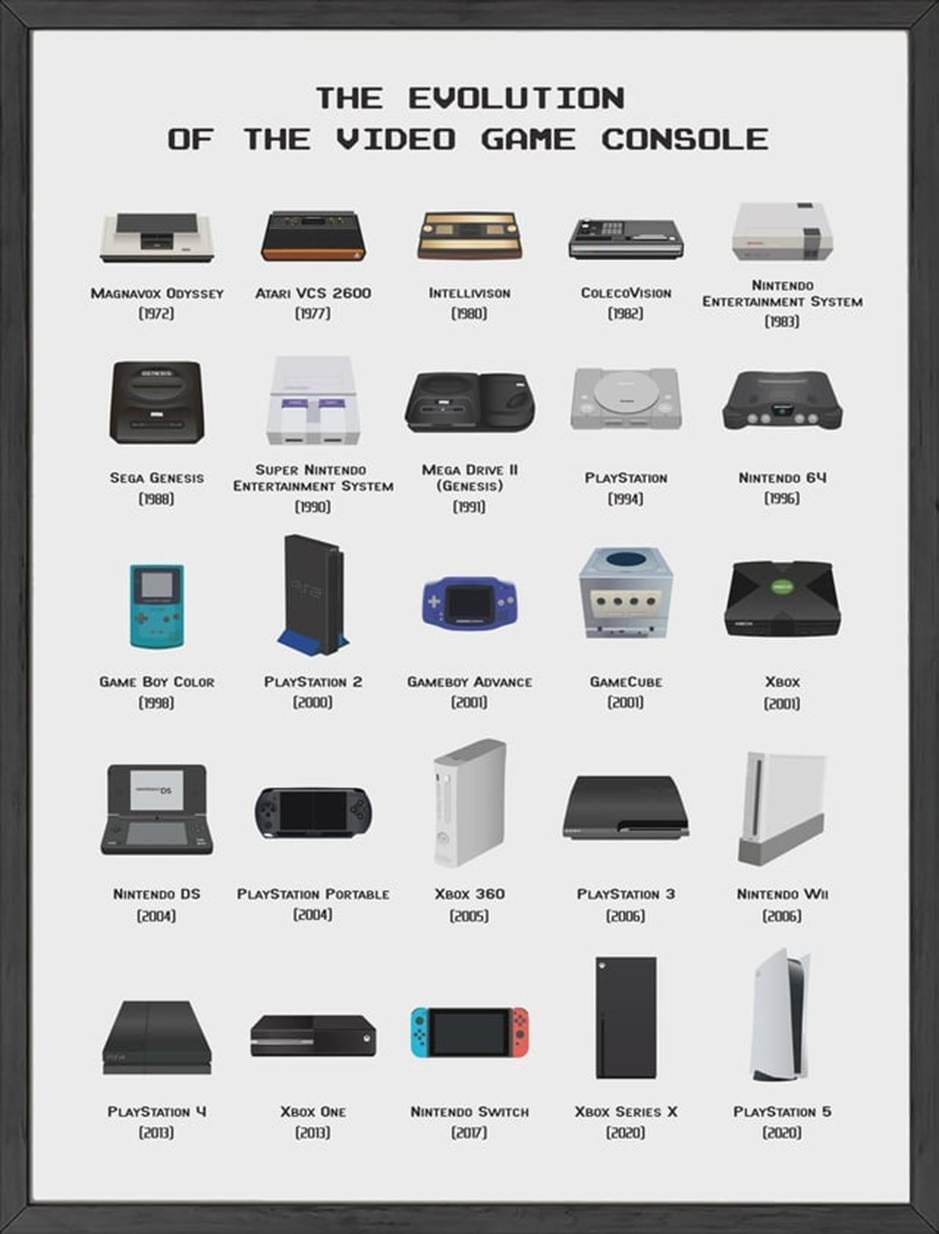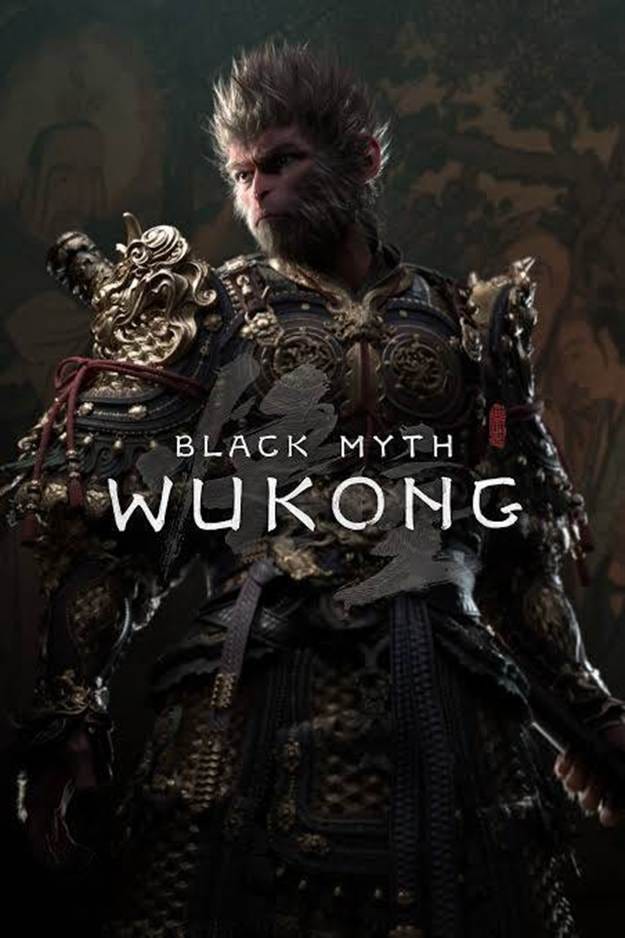The New Dynasty: China’s Rise as a Gaming Superpower
From the shadows of the East, Chinese developers are crafting the next generation of gaming masterpieces, redefining the Triple-A single-player experience
Editor’s Note:
This week’s post has been written by Kush Srivastava, a digital consultant who has spent the past five years advising Fortune 100 companies on customer experience and digital transformation. With a background in design thinking and an MBA in Digital Business, Kush brings a strategic lens to emerging tech and consumer behavior.
But beyond the boardrooms, Kush has been a gamer for over 18 years - tracking every console cycle, genre shift, and studio shakeup with the obsession of a true insider. He’s lived and breathed the evolution of modern gaming and knows exactly what’s at stake as the industry shifts eastward.
Video games have evolved from simple arcade pastimes into a global entertainment juggernaut. What began with games like Pong in the 1970s is now a $303 billion-a-year industry – bigger than film and music combined. Precedence Research estimates that gaming will grow at a compound annual growth rate of more than 10% in the coming years, hitting $722 billion by 2034.
To understand what’s driving this explosive growth, we need to look at the industry’s structure, which can be divided into three main verticals: Console, PC, and Mobile. The first generation of consoles arrived in 1972 with each modern generation cycling every seven to eight years. Since the early 2000s, three main players have dominated this space: Sony’s PlayStation, Microsoft’s Xbox, and Nintendo Switch. Sony and Microsoft kicked off the 9th generation in 2020 with the release of PlayStation 5 and Xbox Series consoles.
Just as Hollywood has Avengers, and Avatar, the gaming industry has its own triple-A epics. These titles blend cinematic storytelling, visual spectacle, and richly immersive worlds. Triple-A games require major upfront investment, backed by the expectation of proportionate returns. These cinematic, immersive games often cost $80–200 million to produce, with marketing often doubling that.
Over the past 20 years, studios like BioWare (Dragon Age), Rockstar (GTA), Bethesda (Elder Scrolls), and Rocksteady (Batman: Arkham), pushed gaming into the mainstream and built massive, passionate fan bases that follow these developers closely.
The Paradigm Shift: The Live Service
Video games were traditionally a product business, with studios focusing on one title at a time. Over the last decade, they’ve evolved into offering gaming as a service (GaaS). The live service model changed the game: instead of launching a new title with fresh start-up costs each time, studios could release a single game and support it for years - delivering regular updates via cloud tech and high-speed internet, often for a recurring fee.
Such a model lowered upfront risks, kept costs low, and ensured recurring revenue for the company. It also enabled “free” games, monetized through updates, seasons, and in-game purchases.
Fortnite, launched in 2015, popularized this model. With $6 billion projected revenue in 2025, its success was impossible for executives to ignore. The only catch: the model works only as long as studios operationally keep supporting it.
Western executives began chasing this ‘Fortnite Money’. Even acclaimed franchises known for their single-player campaigns, such as Assassin’s Creed, were pushed to pivot into multiplayer and live service models - signaling an industry-wide shift.
This resulted in poor-quality releases and eventual flops such as Anthem, Redfall, and Marvel’s Avengers - a live-service adaptation of one of the world’s most recognizable franchises. Traditional single-player gamers, long the industry’s most loyal base, felt frustrated.
This vacuum was filled, in part, by new, young, and daring developers from China who leveraged advancements in gaming technology, creativity, and a passion for gaming, to create new tentpole triple-A releases. Starting with Black Myth: Wukong in 2024, China’s triple-A push now includes Blood Message (a dark fantasy action-adventure), Phantom Blade Zero (a fast-paced hack-and-slash), and Tides of Annihilation (an Arthurian fantasy action game).
Democratization of Game Technology has been Unreal
Video games are built using engines - toolkits that handle everything from visuals and sound to controls and behavior of a game. These engines were once expensive to build, but essential. Valve found massive success with Unreal Engine, which they began licensing to other developers in 1999 - a move similar to what cloud giants like Amazon and Google do with AWS and Google Cloud.
Today, the tech has advanced so much that small, agile teams of around 100 developers can create blockbuster games that once required at least 500 developers, if not more. Unreal Engine 5, the latest version, makes photorealistic characters feel just a few clicks away and it’s even being used by Hollywood for storyboarding and pre-production.

Anyone can use Unreal Engine, and Valve only takes a cut if a game earns over $1 million. Removing tech barriers like this is a win for creativity, letting developers focus on ideas rather than infrastructure.
With no upfront costs, Chinese studios like Game Science, 24 Entertainment, S-Game, and Eclipse Glow Games could pour their energy into storytelling, art, music, and design. The ease of creating digital assets also made rapid prototyping more valuable, helping teams quickly test what works and what doesn’t.
A Dissatisfied Audience
Meanwhile, Western publishers continue to push live service agendas, often at the expense of fan expectations. Since the start of the 9th generation, the core fan base have been treated as second class citizens by both Western and Japanese studios. The chase for ‘Fortnite Money’ meant that executives with no gaming experience ignored player opinions, sidelined their developers, and made their own assumptions of what gaming should be. In 2019, then-EA CEO Andrew Wilson famously called Anthem (a live service flop) a “fundamental shift in the way we think about game development” – a stark reminder of how out of touch leadership had become. Wilson, like many others, tried to force their single-player studios into live service.
Forcing live-service games on single-player studios is like asking Tesla engineers to build gas engines - completely different skill sets, and everyone in the industry should know it. Still, former PlayStation CEO Jim Ryan pushed ahead, announcing in 2022 that Sony would launch 12 live-service titles by 2025. That meant iconic studios behind The Last of Us and Spider-Man were now building multiplayer games.
The result has been an absolute disaster. Of the 12 games, only one has found success (Helldivers II), forcing Ryan into early retirement. Others such as Concord, which cost $400 million, and took five years to develop, was released to gamer apathy. It was cancelled in less than two weeks.
China: A New Power Emerges
This vacuum paved the way for an unlikely challenger: China. Fueled by gamer frustration and rapid technological advances, Chinese developers started releasing trailers and games of their titles, starting with Black Myth: Wukong.
Inspired by the classic novel Journey to the West, the game launched in 2024 with a $70 million budget and quickly became a global hit, selling over 25 million copies by early 2025. This made Black Myth: Wukong one of the most profitable triple-A games ever. The game delivered a visually stunning, modern experience that resonated with today’s gamers. It earned critical acclaim, winning Best Action Game of 2024 and landing the coveted nomination for Game of the Year.
Black Myth: Wukong was a watershed moment. No longer content with mobile games and monetization mechanics, Chinese developers were now challenging triple-A heavyweights. The game’s success and low cost left publishers wondering how 25 million copies for a game were even possible without crossing $100 million. Executives took notice when it hit a peak of 2.4 million concurrent players - an all-time high for any new game this generation. Ironically, the game’s developers were inspired by Western hits like God of War and World of Warcraft and now, in a twist of fate, their own creation is making waves in the West.
Trailers for upcoming titles Blood Message, Phantom Blade Zero, and Tides of Annihilation have already clocked millions of views. Excitement for these titles is palpable with one fan summing up the sentiment as: “From not knowing about this game five minutes ago, it’s now at the top of my most wanted list.”
Be it creative vision, bold storytelling, slick gameplay, or just the jaw-dropping visuals, gamers are finding something to latch onto in these titles, even with their imperfections. After years of voicing frustration on social media and feeling ignored, they’ve started voting with their wallets. And now, Western and Japanese studios are facing real competition. True progress in any industry comes when more players enter the game, and China’s rise in triple-A gaming might be just what the industry needs to evolve.
10th Generation Belongs to the Chinese Developer
With Western and Japanese developers chasing the elusive “Fortnite Money,” titles like Blood Message, are quietly positioning Chinese studios to capture the global gamer’s imagination - through rich, narrative-driven single-player experiences.
It's an interesting juxtaposition - as Western studios double down on live-service monetization, Chinese developers are leaning into immersive, single-player experiences. The outcome is still unclear, but one thing is certain: the economics of game development have never been more favorable in China’s favor, with long development cycles and labor tipping the scale.
With China’s considerable competitive edge, and the 10th generation looming on the horizon, it’s not a prediction but a spoiler: by decade’s end, Chinese games, once seen as a hub for mobile and free-to-play titles, will feature frequently and win Game of the Year awards, redefining the global gaming landscape as we know it.







Great Piece! Interesting and different read
super read on the burley of gaming and future as china gets in .. i have caught up the entire gaming history and current in one article ..